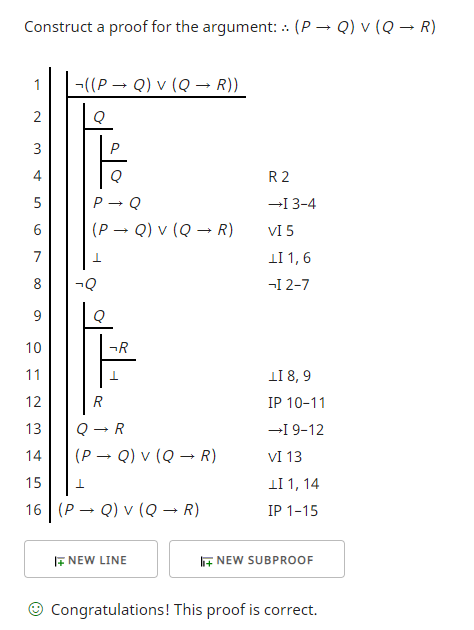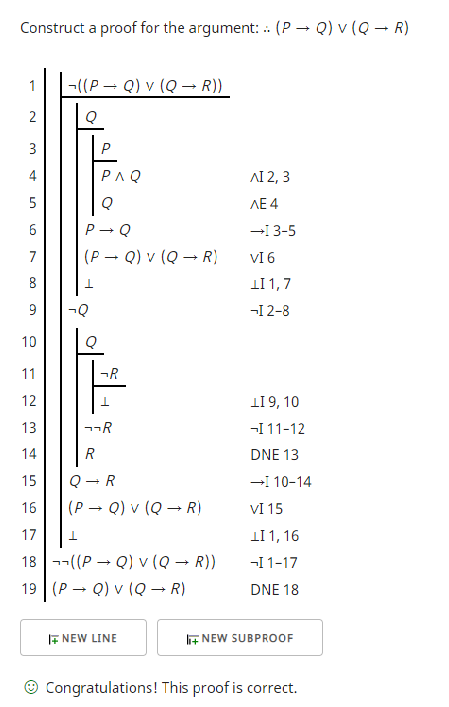Here's another of Tomassi's exercises I can't solve (Logic, page 106):
: (( P → Q ) ∨ ( Q → R ))
I have to use natural deduction and the only rules I know are:
• assumptions,
• modus ponendo ponens,
• modus tollendo tollens,
• double negation,
• reductio ad absurdum,
• conditional proof,
• v-introduction,
• v-elimination,
• and introduction,
• and elimination.
Tomassi's proof consists of 20 steps.
Thanks for the help.
This is my answer so far:
{1} 1. (P -> Q) v (Q->R) Assumption
{2} 2. P -> Q Ass for vE
{3} 3. P Ass for CP
{4} 4. ~Q Ass for RAA
{2,4} 5. ~P 2,4 MT
{2,3,4} 6. P & ~P 3, 5 &I
{2,3} 7. ~~Q 4, 6 RAA
{2,3} 8. Q 7 DNE
{2} 9. P -> Q 3, 8 CP
{2} 10. (P -> Q) v (Q->R) 9 vI
{11} 11. Q -> R Ass for vE
{12} 12. Q Ass for CP
{13} 13. ~R Ass for RAA
{11,13} 14. ~Q 11, 13 MT
{11,12,13} 15. Q & ~Q 12, 14 &I
{11,12} 16. ~~R 13, 15 RAA
{11,12} 17. R 16 DNE
{11} 18. Q -> R 12, 17 CP
{11} 19. (P -> Q) v (Q->R) 18 vi
{1} 20. (P -> Q) v (Q->R) 1, 2, 10, 11, 19 vE
I don't know how to discharge the assumption 1.
Any help please?


